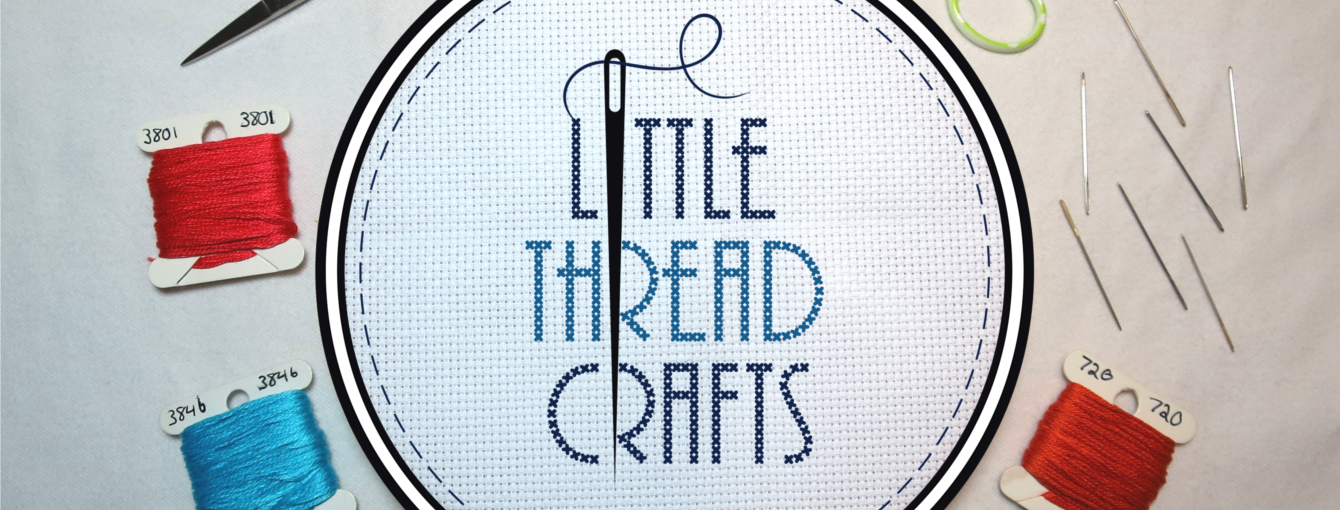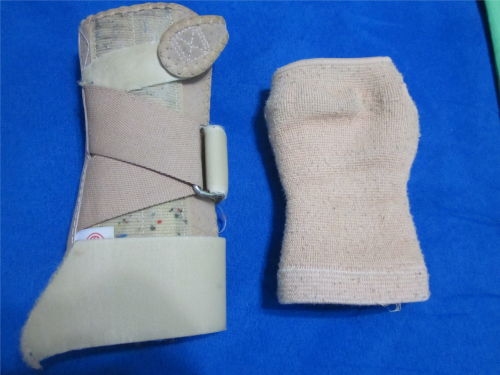Stitching with Care: Pain Management Tips for Stitchers with Health Issues

My family often jokes that I’m a twenty year old girl with the body of an eighty year old woman. It sounds funny, but it’s mostly true. I have mysterious pains in both my left wrist and my lower back, and I have to take Glucosamine supplements about once a month in order to keep myself from feeling like I’m falling apart. I’ve been to the doctor and had blood work and x-rays, but no one is able to figure out how and why I have pain because everything comes back healthy and normal. The nurses have even said my levels are fantastic and just right for my age. So, until science can tell me what’s wrong, I just deal with my pain as it comes.
As anyone with health issues knows, working on your hobby can be a tiresome and painful experience when you have aches and pains to deal with. It’s a double-edged sword: you want to work on your hobby because it’s fun and relaxing, which is good for your health, but working on your hobby can aggravate your issues, which is bad for your health. Sometimes you’re just forced to put down the needle and thread and find something else to do, or stop doing anything entirely until you feel better.
I’m learning how to adapt cross-stitching into my life of pain management, and I thought to compile all my “tips and tricks” into a list so that other stitchers with health issues might benefit as well. This is not a catch-all – what works for me might not work for you – but it’s at least a good place to start. And if I can help a fellow stitcher find ways to keep stitching, then it’s a good day for me!
1. TAKE FREQUENT BREAKS
This is a BIG one for me, and advice I really need to listen to more often. The act of bending over hoop and fabric is already a large strain on the neck and shoulders, and depending on the way a person is sitting, can be a strain on the lower backs, hips, arms, and wrists as well. The best way to avoid pain is to take a break. Get up, stretch your legs, and relax the muscles that you’ve been using to sew and stitch. I usually need to take a break every half hour to an hour. If I don’t – if I get caught up in my stitching, which is usually what happens – my back flares up and my whole body can feel sore and achy even into the next day. Sometimes my wrist flares up too, after holding a hoop or the fabric for too long.
2. SIGHT FOR SORE EYES
The most-used muscles in the human body are in the eyes. The eyes also have the largest concentration of muscles. Cross-stitching is an eye-heavy sport, and getting tired and watery eyes and headaches due to eye strain is common among stitchers. I’m as blind as a bat without my glasses, so I wear powerful contacts and don’t have much trouble in terms of seeing. But, I know a lot of people do. The best ways to ward off eye strain include wearing “cheater” glasses, taking breaks, and making sure to have an ample amount of light to stitch by.
What are “cheater” glasses? Some people buy reading glasses, the kind you can find for a dollar or two in every store, and use them as a modified magnifying glass. They double up, wearing them over their original glasses, or use them as a type of bifocals. Even people who don’t even wear glasses use the “cheater” glasses sometimes!
Reports have shown the best lights to use for stitching are the “daylight bulbs”. These are special types of bulbs that are on the brightest end of the light spectrum, often advertised as “just like sunlight”. They can be found in nearly every store that sells light bulbs and several different brands offer them. Some stitchers buy expensive lamps that use daylight bulbs; brands like OttLite that make floor and reading lamps. While it’s fine if you prefer that, the bulbs used in the expensive floor lamps are identical to the Daylight bulbs, and buying energy-efficient Daylight bulbs are so much cheaper than buying a whole new lamp unit. I bought an entire package of Daylight bulbs for my room for about $10, enough to fit my ceiling fan and my floor lamps, and the lighting quality is fantastic.
3. Switch It Up
Sometimes the best way to prevent pain is to just switch it up. Does it hurt your body to hold a hoop? Try stitching in hand instead. (“Stitching in hand” means to stitch while just holding the fabric, no hoop, no frame, just fabric.) Alternatively, if it hurts to stitch in hand (like with me), stitch while using a hoop or a scroll frame. If it hurts to hold anything in your hands period, invest in getting a hoop/scroll stand, specialty frames made to sit on the floor, in your lap, or hook onto a table so you can stitch hands-free.
If it’s the needle-and-thread part that’s making it difficult, a good thing to try is a double-ended needle. These needles have sharp points at both ends, with the eye in the middle, allowing you to stitch without flipping the needle around. They can be hard to find, and it takes a little getting used to, but stitchers have said it helps with pain and it makes stitching just a little bit faster.
The biggest problem I have with my wrist is the way I hold my hoop. If I grip it from the side, my hand eventually gets sore and then my wrist flares up. It’s especially bad if I’m stitching on the far right and I’m holding the hoop on the far left. My best adjustment for this was to adjust the way I hold the hoop: I rest the bottom against my stomach or thighs, and then just gently rest my hand on the top of the hoop, enough to steady it. And then I adjust my grip and position frequently and it seems to help.
4. Wear A Brace
If you have wrist pain like I do, the best thing to prevent the pain might be to wear a brace. I have two different braces depending on the pain I’m having (my mysterious pain likes to switch it up): a hard brace with splints, if the pain comes from movement and bending, and a soft warming brace designed for arthritis users, if the pain is aching and requires compression. Both of these can be found in nearly any drug store. I found similar ones in stores like Meijer and Wal-Mart. They don’t do much more than help with the pain if the pain is already there, but if I happen to be wearing one of them before I start stitching, they do a phenomenal job of preventing the pain in the first place.
Those are my four biggest tips and tricks to help with my own pain management and still enjoy my stitching time. What about you? What do you do to help with aches and pains? Leave a comment below or join the discussion over at the Facebook Page.
————————————————————————————
“Random Corner” is a place for all articles related to all manners of cross-stitchery and the cross-stitch community that don’t fall into the topics covered in the regular weekly schedule. There is no set schedule for Random Corner articles, they’re just random!

